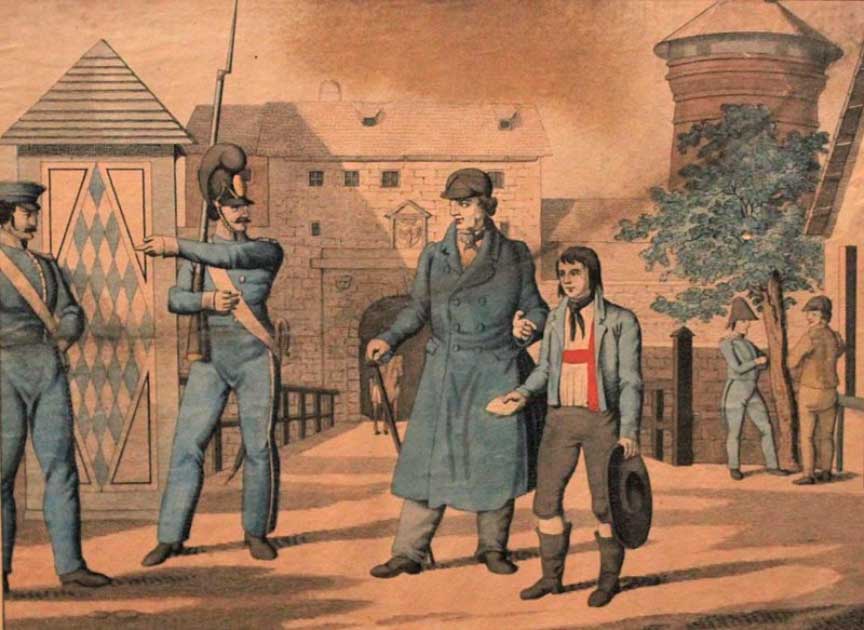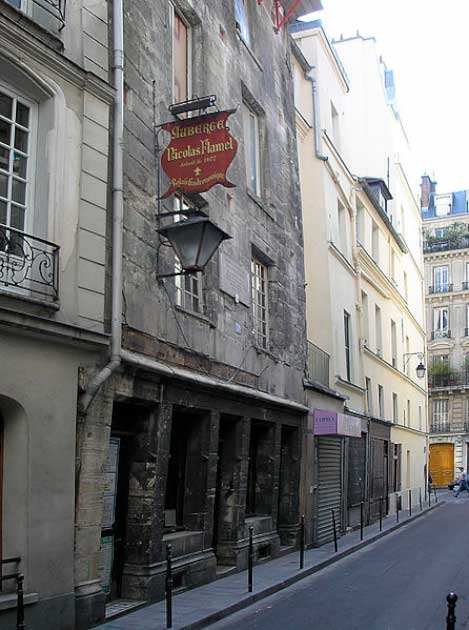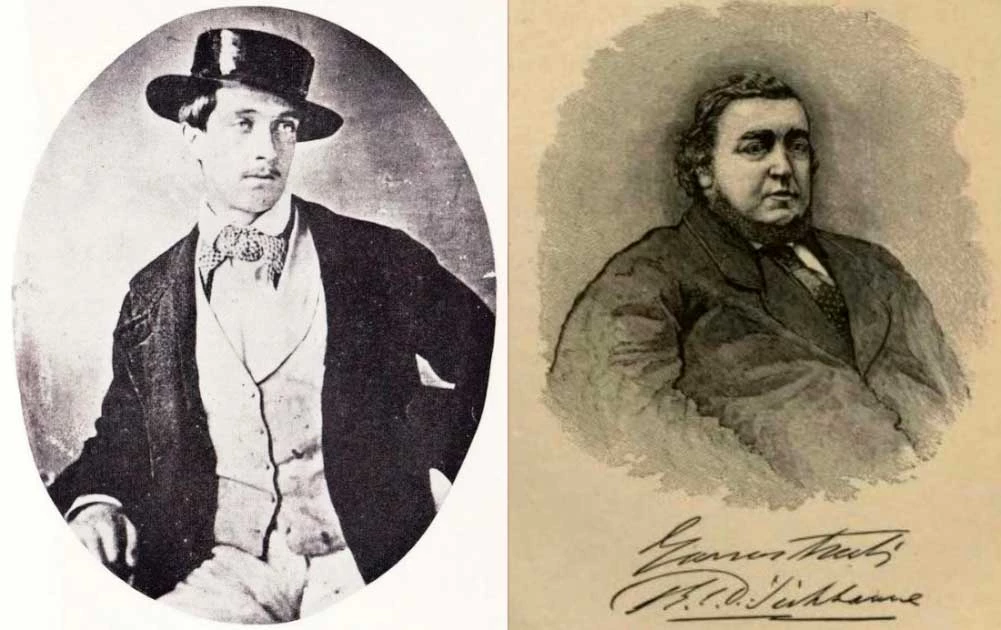There have been mysteries throughout history. Strange edifices, built by obscure and hidden cultures, survive to baffle modern day science and leave archaeologists guessing as to their creators, or their purpose. Everyone knows the story of the Man in the Iron Mask, but there are far more intriguing mysteries out there to be solved.
But it is not only the physical remains which baffle. Through recorded history there have also been strange cases of unknown people, who do not belong in the society they find themselves and who are often as much at a loss to understand the world around them, as observers are to explain their presence in it.
Such people often leave more questions than they answer. Are they time travelers, visitors from unknown cultures, or even superior beings? Or are they fraudulent, con artists looking to capitalize on a brief moment of celebrity by duping the useful idiots around them?
Here are eight such strange characters from history.
1. The Count of Saint Germain
Where to start but with perhaps the most famous of them all, the mysterious Count of Saint Germain. Or was it the Marquis de Montferrat, or perhaps the Chevalier Schoening? Truth is, this enigmatic interloper into 18th century European society went by many names, and that was just the start.
Claiming to be over 500 years old and clearly an educated and sophisticated man, he appeared in the French court around 1750 and impressed the assembled nobility. A skilled philosopher, composer and writer, he moved around the courts of Europe, impressing everyone he met but remaining aloof.
And what of his strange claims to great age and his reluctance to reveal anything about his past? Some see him as a man out of time, perhaps even a time traveler. However this is, for obvious reasons, unlikely: the real “Count” died almost destitute in 1784. That is, unless he faked his death.
2. Kasper Hauser
In Nuremberg in Germany on the 26 May 1828, a teenaged boy was found wandering the streets, carrying a letter which states he had come from the Bavarian border. He was healthy and well fed, and seemed aware of the basics of German society, such as how to buy bread. But as to why he came to be in Nuremberg, he had no idea.

Nor was the enigma of Kasper Hauser ever solved. He claimed to remember living in a dark cell, but had no other useful memories to help the authorities identify who he was. He started a new life in Nuremberg, but it seemed his past caught up with him when, six years after his discovery, he was stabbed to death by an unknown assailant, for unknown reasons.
Rumors abounded that he was in fact the hereditary Prince of Baden, who had been believed to have died in infancy, with the royal succession going to his uncle. The story was that Hauser had been switched and then spirited out of the castle, to one day return and claim his title. However, nothing conclusive was ever found to explain this strange man.
3. The Man from Formosa
In 1701 or 1702, a strange man was discovered working as a mercenary in Europe who had a baffling story. The man claimed to have been kidnapped by an evil Jesuit missionary named Father de Rode of Avignon, who had kidnapped him from his home and taken him to Europe to convert him to Catholicism. The man claimed to originate from Formosa, known today as Taiwan.
Authorities were immediately suspicious of his story. For one thing, this blonde haired, blue eyed man spoke fluent Latin with a Dutch accent. However Formosa was a far off, mysterious island, and many know knew nothing of the far east believed his story.

Christened George Psalmanazar by an Anglican priest who took him in, he was welcomed into British society where he delighted his hosts by talking in gibberish and eating handfuls of raw meat. He wrote books on the Formosan language, customs and people, which have all turned out to be completely wrong.
4. Fulcanelli
Our first alchemist on this list, Fulcanelli comes from early 20th century France and, like Socrates, is only known through publications and descriptions from his students. We know a few details about his life, for instance that he was married, but he is almost entirely unknown.
But he was not some obscure tinkerer, but (according to the records which survive) a fully fledged and successful alchemist who could successfully turn lead into gold, the holy grail of alchemy. His successes were only reproduced by his most famous student, Eugene Canseliet, and it is possible that his secrets died with him, or else remain closely guarded to this day.
Several historical figures have been suggested as the true identity of Fulcanelli, such as Canseliet himself, another student named Jean-Julien Hubert Champagne, or the experimental physicist Jules Violle. But the identity of the man, his methods and the key to his successes remain hidden to this day.
5. Dolores Barrios
The year was 1954, and after the Roswell incident of 1947 the United States was gripped in a UFO craze. Hundreds of reports of flying saucers came in, and that year believers came together for a convention at the peak of Mount Palomar in California. There, many believe they met an alien.
Walking through the crowds, accompanied by two mysterious men, was a tall, thin woman with pronounced facial features: a broad forehead and large eyes. The three were fair-skinned, and the woman wore her hair in a blond bob, but her eyes were dark and fierce.
George Adamski, a prominent UFOlogist, had must given a talk on Venusians and the woman seemed to match his physical description perfectly. However the beautiful woman herself refused to answer questions as the crowds flocked around her, only telling them that her name was Dolores Barrios. Shortly afterwards the trio vanished, and they have never been seen since.
6. Nicolas Flamel
The other alchemist to make this list is also the original and perhaps greatest of all time: this is the sorcerer in the title of the first Harry Potter novel, Harry Potter and the Sorcerer’s Stone (Philosopher’s Stone in the UK). But unlike almost everyone else in these novels Flamel was a real person.

He lived in Paris in the 14th century, and his residence is still know to this day. While living there, he was said to have successfully turned lead into gold, and to have also cracked the secret of immortality, through his decoding of an ancient alchemy book from the original mystic Hebrew text, with the help of a Spanish scholar.
Nicolas Flamel is reported to have died in 1418, an odd development for someone who had unlocked the secret of immortality. His reputation was fueled long after his death, with several books attributed to him. Today, in Paris, there are still two streets named after Nicolas Flamel and his wife, Pernelle.
7. Shanti Devi
Shanti Devi was born in India on 11th December 1926. She was just four years old when she started to claim that the home she was in wasn’t her real home. She also said that her parents weren’t real as well! Soon, she said that she understood the reason for her confusion: she could remember her past life.
Shanti Devi claimed that she was married in her past life, and also had a son. She also claimed that her husband lived in Mathura. Later, the headmaster did some research to find a merchant in Mathura whose wife died nine years earlier. The name of the merchant’s wife was Lugdi Devi, and she died after giving birth to a boy.

She also remembered her husband’s name, which was Kedar Nath, who was still alive. A meeting was arranged between Shanti and Kedar, and he emerged convinced that she truly was his wife reincarnated, given her knowledge of their life together. Her claims remain unproven to this day, but many believe that this is evidence of reincarnation.
8. Roger Tichborne
A more down to earth mystery for the last person on this list: Roger Tichborne, heir to the Victorian Tichborne baronetcy, died in the Americas in a shipwreck in 1854, at the age of 25. In 1862 his father died andhis younger brother inherited the estate. And then in 1865 Roger Tichborne reappeared in Australia.

His mother had never given up hope of finding him and had placed adverts in Australian papers in the hope of a lead, and to everyone’s amazement it seemed that her prayers had been answered. A man going by the name of Thomas Castro, an Australian butcher, had come forward claiming to be the lost heir.
The physical resemblance was striking, although Castro was far heavier than Tichborne. However, as questions began to mount his story was challenged in a famous Victorian trial. The claimant, as he became known, lost the trial and inherited nothing, but the question remained unresolved for many. Was he Tichborne?
Top Image: His identity unknown, the Man in the Iron Mask is just one example of a mysterious person from history. Source: Unknown Author / Public Domain.
By Joseph Green